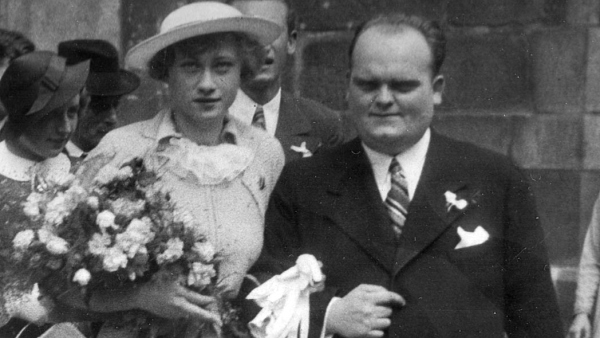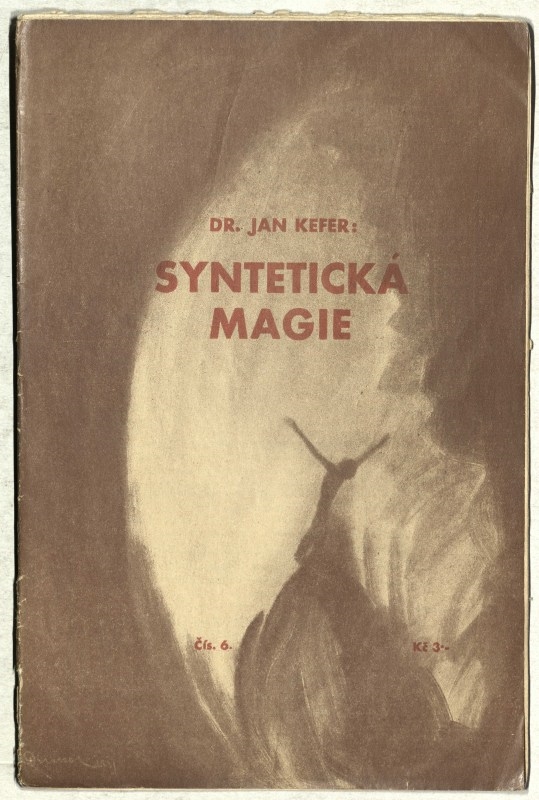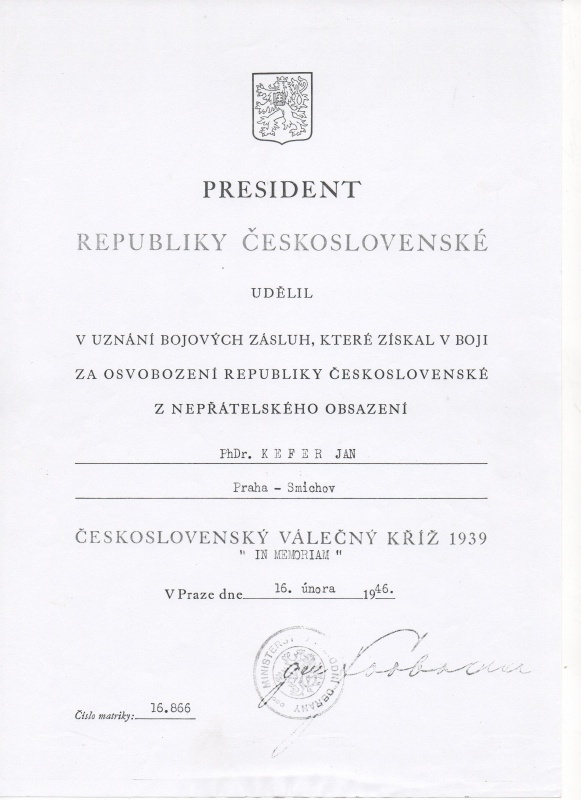04.12.2014 | Jan Kefer, one of the most recognized hermetic of the last century and also long-term employee of the National Museum Library attempted an uncommon act at the beginning of WWII.According to the opinion of Czech hermetics, he tried to stop Hitler using several magic interventions. His attempts were not successful, and Jan Kefer was shortly after transported to German concentration camp where he died at the age of just 35.After the war, the president Edvard Beneš awarded him with Czechoslovakian War Cross in memoriam.

The life story of Jan Kefer ended too soon, but he managed to create remarkable work during his short life.He was born in 1906 in Nový Bydžov, and after his father’s death the family moved to Prague. Jan started working as unpaid trainee in the National Museum Library immediately after graduation, and later he was employed in permanent position. In the National Museum, he found inspiring environment; one of his colleagues was an ethnologist interested in folk occultism, another was high positioned Mason.
 Kefer, who spoke seven languages – German, Italian, French, English, Latin, Greek, Arabic – could study in the museum library the original philosophical and religionist texts in original wording. He focused on astrology, occult, and alchymia, that is the main three pillars of hermetism. ‚Jan Kefer found out the highest form of occult is theurgy which is basically the divine occult – forces which move the world.He became a strong practising member,“ says Petr Kalač, employee of the National Museum Library.
Kefer, who spoke seven languages – German, Italian, French, English, Latin, Greek, Arabic – could study in the museum library the original philosophical and religionist texts in original wording. He focused on astrology, occult, and alchymia, that is the main three pillars of hermetism. ‚Jan Kefer found out the highest form of occult is theurgy which is basically the divine occult – forces which move the world.He became a strong practising member,“ says Petr Kalač, employee of the National Museum Library.
Jan Kefer was a very active man. Additionally to work for the National Museum he studied at the Faculty of Arts at Charles University, lectured, he was a scout leader, and also published. His most recognized hermetic works include Syntetická magie (1935) and Praktické astrologie aneb umění předvídání a boje proti osudu (Prague 1939). He was very lucky to be able to afford such lifestyle; his mother supported him during the studies, and after the marriage with Dagmar Moosová in 1935, who fell in love with him during one of his hermetic lectures, the young family lived of Kefer’s museum salary and the dowry of his wife. Dagmar Keferová became astrologist after the wedding and was a fortune-teller by means of horoscopes. In 1936, their son Reginald was born.
 Mr. Kefer was greatly involved in the Association of Czechoslovakian Hermetics Universalia. He was a chief editor of its magazine Logos, and he issued the sheet encyclopaedia of hermetics which was to enable a wide range of readers to study foreign hermetic literature and help explaining its unknown terminology.
Mr. Kefer was greatly involved in the Association of Czechoslovakian Hermetics Universalia. He was a chief editor of its magazine Logos, and he issued the sheet encyclopaedia of hermetics which was to enable a wide range of readers to study foreign hermetic literature and help explaining its unknown terminology.
As a dedicated patriot he kept highlighting the growing threat of Nazi Germany during his public lecturers. After the Munich Agreement in 1938 he attempted another act: ‚Jan Kefer offered to the Czechoslovakian government to help pacify Hitler. Edvard Beneš refused,‘ said Petr Kalač and added: ‚However,Kefer still performed three occult acts to attack Hitler’s astral. . The first operation was performed in 1938, two more during the Protectorate.‘ The occult attack took place in hidden places outside Prague but were not successful. Some hermetics assume, Adolf Hitler was protected from similar attacks by German occult association Thule. It was probably the reason why Kefer was affected by so called reverse impact of forces which he sent during his ceremonies.
 After denunciation, Jan Kefer was arrested by Gestapo on the 9thof June 1941, and imprisoned at first in Pankrác and then in Karlovo náměstí. Gestapo tried to get Kefer to cooperate with them but he refused. He was transported from Prague to concentration camp Flössenburg, where he worked in stone quarry. As a result of torture he died on the 3rdof December 1941. Shortly after, his wife Dagmar died at the age of 26 due to psychological torment, the grandparents looked after their son Reginald.
After denunciation, Jan Kefer was arrested by Gestapo on the 9thof June 1941, and imprisoned at first in Pankrác and then in Karlovo náměstí. Gestapo tried to get Kefer to cooperate with them but he refused. He was transported from Prague to concentration camp Flössenburg, where he worked in stone quarry. As a result of torture he died on the 3rdof December 1941. Shortly after, his wife Dagmar died at the age of 26 due to psychological torment, the grandparents looked after their son Reginald.
In relation with Kefer’s resistance activity, despite the bizarre form, president Edvard Beneš awarded the Czechoslovakian War Cross to Jan Kefer. His life attitude and fight against a great threat represented by Hitler controlled Germany were clearly evaluated. It is clear that Jan Kefer valued life in all forms and always searched for the real base of matters. It is not a consequence that the first issue of renewed magazine Logos, which started after the Velvet Revolution, opened with potential Kefer‘s text indicating: „Fanaticism is one of the most contagious diseases of humankind; individuals, churches, and sects fall prey to it.And the fools suffering from fanaticism argue on the true nature of their accepted doctrines, in their madness forgetting to abide by them and using them for their real purpose‘.
(dan)
Archeologie Historie Hudba Lidová kultura Mimoevropské kultury Osobnosti Přírodní vědy Rekonstrukce Restaurování Rukopisy a tisky Umění Vánoce Výstavy
Muzeum 3000, zpravodajský portál Národního muzea, odhaluje jedinečná tajemství. Více se dozvíte zde!